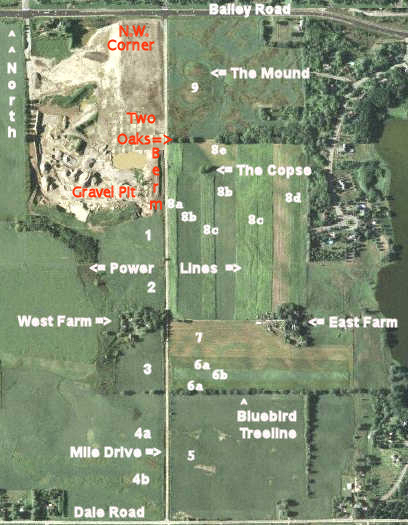
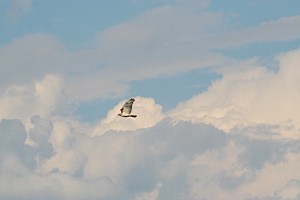 This photograph was taken using a zoom lens from one of the rises
of the road, giving it the effect of being taken at the same level as the hawk.
These photos are of red-tailed hawks, commonly
called "chickenhawks". This hawk passed me going south, then far down the road,
crossed, turned back and came back toward me, joined by its mate
This photograph was taken using a zoom lens from one of the rises
of the road, giving it the effect of being taken at the same level as the hawk.
These photos are of red-tailed hawks, commonly
called "chickenhawks". This hawk passed me going south, then far down the road,
crossed, turned back and came back toward me, joined by its mate
|
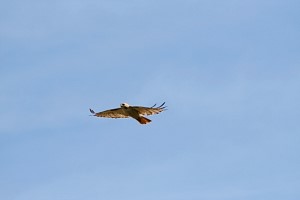 This photograph is out of focus, but I have included it because I like how the wingtip
feathers stick out. As a partial migrant, some redtails are migratory and other individuals are not.
Red-tailed hawks and other members of the hawk family are extremely
important to the ecology of the local environment, as they help to keep down rodent
populations.
This photograph is out of focus, but I have included it because I like how the wingtip
feathers stick out. As a partial migrant, some redtails are migratory and other individuals are not.
Red-tailed hawks and other members of the hawk family are extremely
important to the ecology of the local environment, as they help to keep down rodent
populations.
|
|
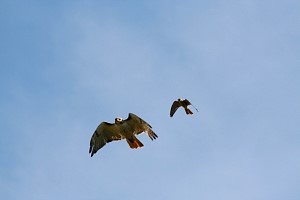
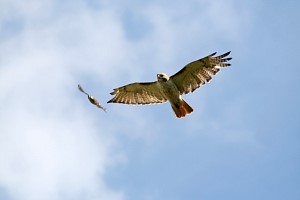 If you enlarge the left-most picture, it appears the hawk is looking directly
at me.
The trailing hawk appears much smaller because
of perspective, although the red-tailed hawk displays sexual dimorphism -
females are 25% larger than males.
Red-tailed hawk plumage can be variable,
depending on the subspecies. These color variations are called morphs.
Red-tails may have white chin, throat, and breast.
I identify these as red-tails because of the slim white line along the
end of the tail and the sparse belly band formed by vertical streaks in
across belly.
Tails may appear brick red from above and pink below.
Return to Birds
If you enlarge the left-most picture, it appears the hawk is looking directly
at me.
The trailing hawk appears much smaller because
of perspective, although the red-tailed hawk displays sexual dimorphism -
females are 25% larger than males.
Red-tailed hawk plumage can be variable,
depending on the subspecies. These color variations are called morphs.
Red-tails may have white chin, throat, and breast.
I identify these as red-tails because of the slim white line along the
end of the tail and the sparse belly band formed by vertical streaks in
across belly.
Tails may appear brick red from above and pink below.
Return to Birds
|
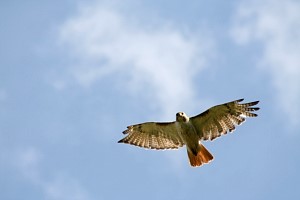
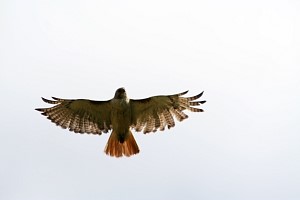
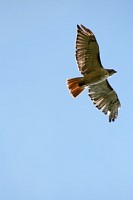 The red-tailed hawk, one of the largest open-habitat raptors in North America,
exemplifies the classic hawk configuration. It has a chunky body, broad wings,
and a tail that is often spread or fanned in flight. The Red-tailed hawk’s roundtipped
wings and bulging secondary feathers make the species appear "muscular" in
flight. When soaring, redtails typically hold their wings in a slight dihedral or shallow
"V."
The red-tailed hawk, one of the largest open-habitat raptors in North America,
exemplifies the classic hawk configuration. It has a chunky body, broad wings,
and a tail that is often spread or fanned in flight. The Red-tailed hawk’s roundtipped
wings and bulging secondary feathers make the species appear "muscular" in
flight. When soaring, redtails typically hold their wings in a slight dihedral or shallow
"V."
|
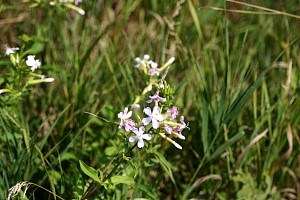
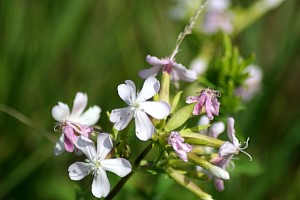
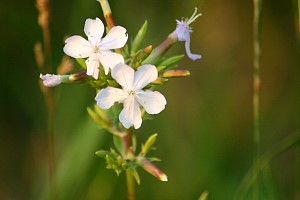 Bouncing Bet or Soapwort (Saponaria officinalis) is native to Europe.
This fragrant flowered plant was brought to America from England by colonists.
As the name implies, a lather can be produced from the foliage of this plant.
The name Bouncing Bet is an old fashioned name for a washer woman. The plant is mildly
toxic.
Return to Flora
Bouncing Bet or Soapwort (Saponaria officinalis) is native to Europe.
This fragrant flowered plant was brought to America from England by colonists.
As the name implies, a lather can be produced from the foliage of this plant.
The name Bouncing Bet is an old fashioned name for a washer woman. The plant is mildly
toxic.
Return to Flora
|
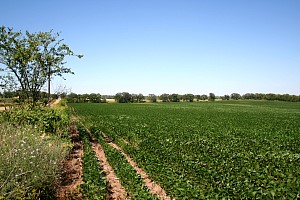
Soybeans in Field #5.
|
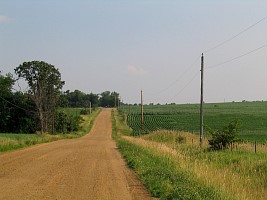
On Mile Drive heading south.
|
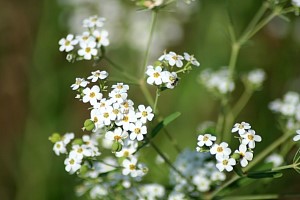
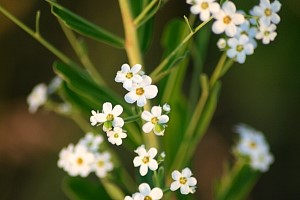
Flowering Spurge (Euphorbia corollata)
The flowers attract wasps, flies,
and short-tongued bees.
The protruding seeds are popular
with birds, including the wild turkey and
mourning dove. This plant is rarely eaten by
herbivores because of the toxic white latex in the leaves
and stems, which can kill cattle.
Return to Flora
|
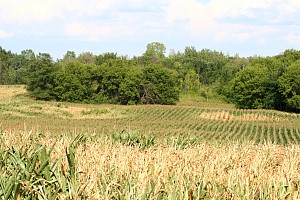
The corn in Field #9 continues to suffer from drought.
|
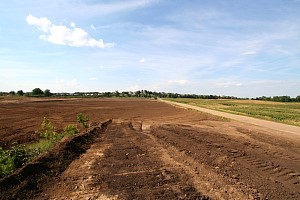
Looking north from where the old berm was, along the west side of the road near Twin Oaks.
Terre forming has eliminated the old gulch and leveled off the northwest corner where
Mile Drive meets Bailey Road. Rumor has it this will become ball fields.
|
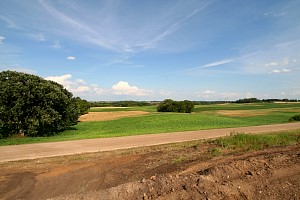
Twin Oaks (left) and The Copse (right middle ground).
|
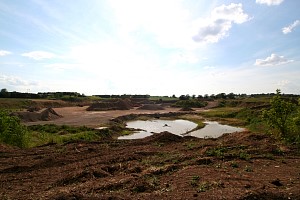
The bottom of the gravel pit has featured this pond since early spring. With renewed terra forming
I expect it to soon disappear.
|